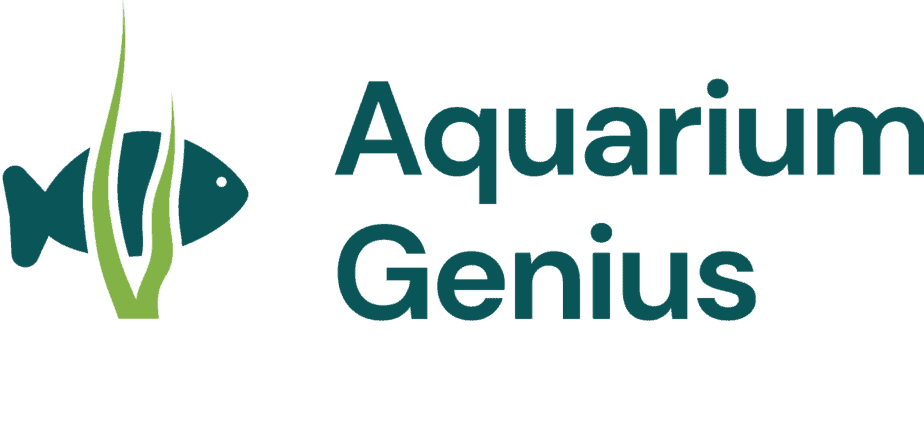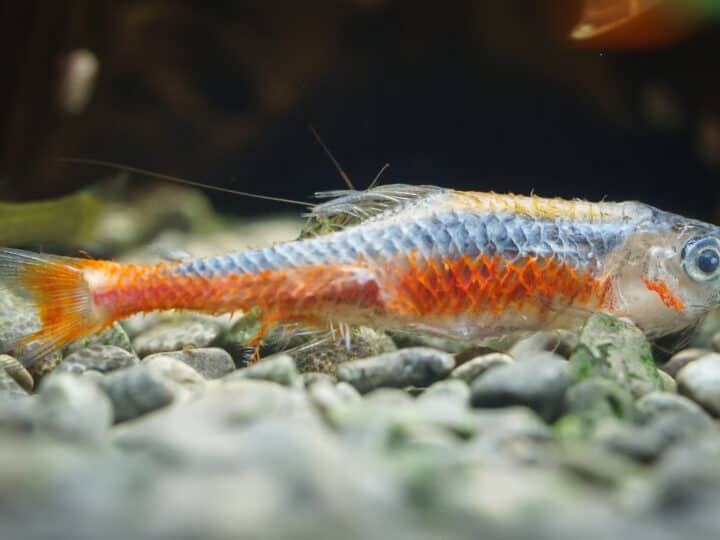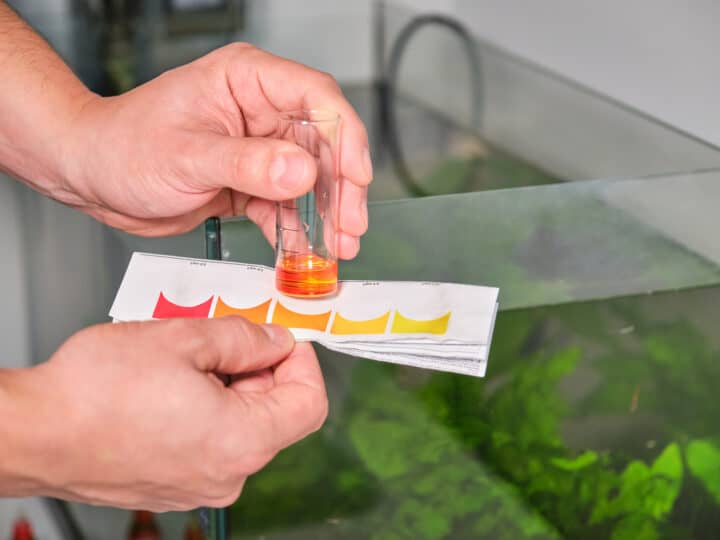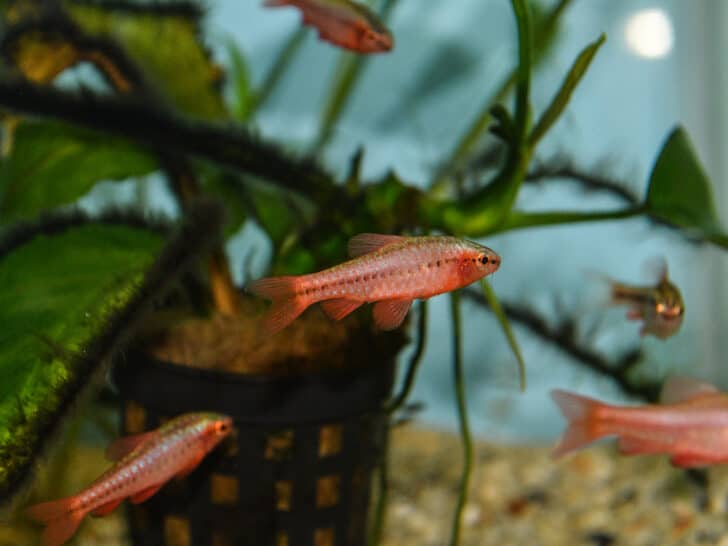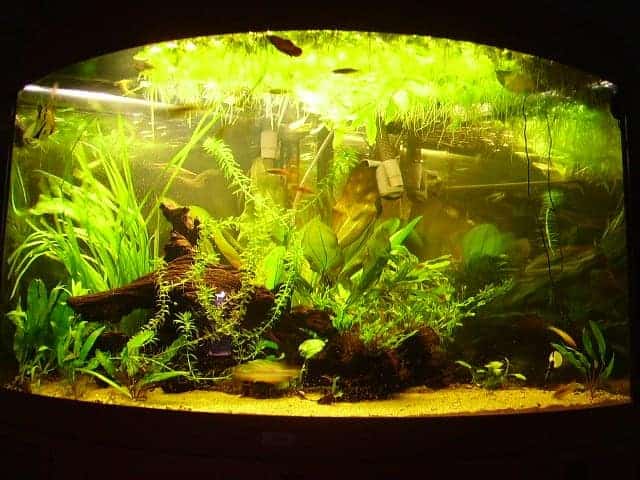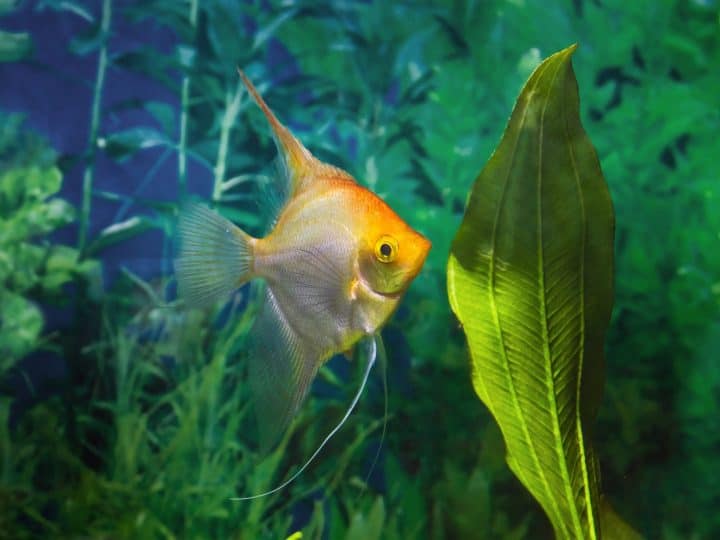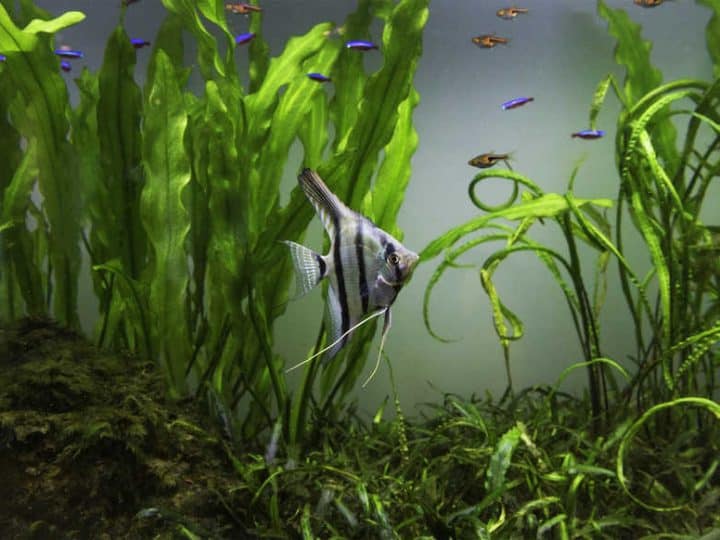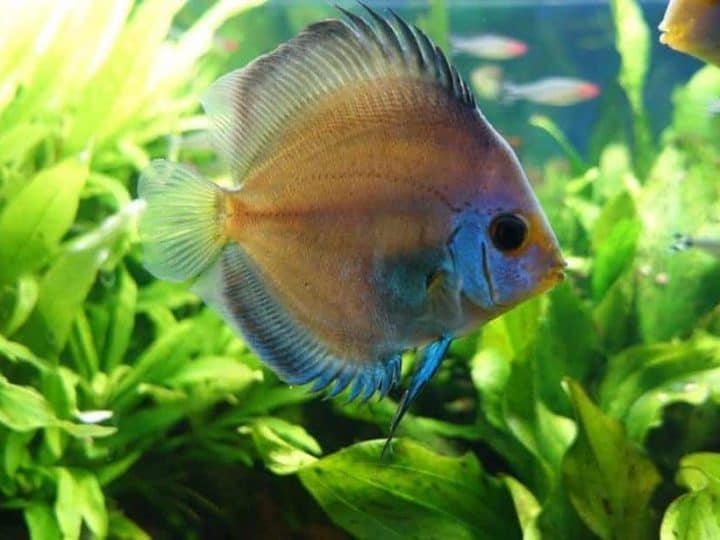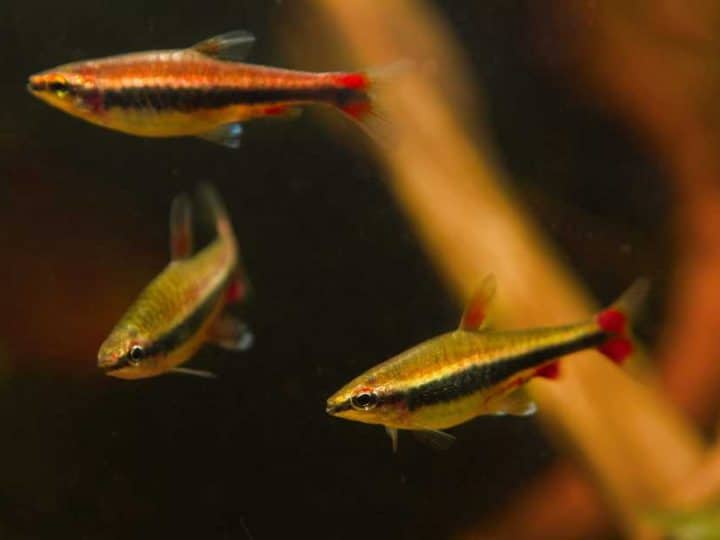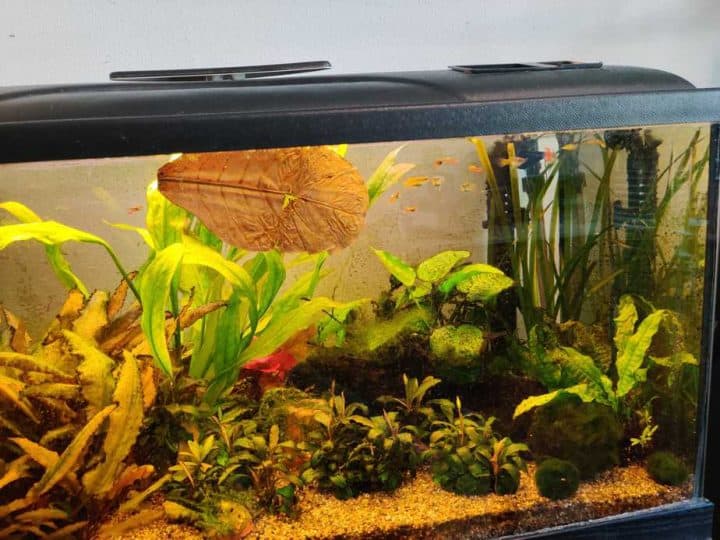I remember how difficult it was to stay patient when I was cycling my first planted tank. However, it’s a crucial aspect of keeping your fish safe, which is why you need to do it right. Luckily I’ve come to learn it’s not difficult.
Quick Answer
To cycle a new planted tank, one needs to add a source of ammonia. This can be some fish food that starts rotting as well as diluted store-bought ammonia. Ammonia is the food source for beneficial bacteria that will start to grow. Plants also eat ammonia, so keep the concentration around 2ppm.
Keep reading to find out how to create a cycled tank with plants in it. Cycling a planted tank is a bit different from cycling a “regular” aquarium. If you make mistakes during this cycling process, you risk adding fish to an unsafe environment.
How to Start The Cycle in a Planted Tank
The first thing that you should do is add water to your tank, add a filter (and turn it on) and plant your plants. You do not have to wait with adding plants to a new tank. You can basically set up the entire tank, except for the fish. The new tank is not safe for fish yet, that’s what the cycle is for.
Now that you’ve got everything running, you need to add a source of ammonia. Ammonia is the food of the beneficial bacteria that will start to grow in your filter over the coming 6 weeks. You can add an ammonia solution to your tank or add some fish food that will produce ammonia when it starts to rot.
Start The Aquarium Cycle with Diluted Ammonia
If you choose to go down the liquid ammonia road, you’ve got some experimenting to do. You want to add just enough ammonia to your tank to reach a concentration that’s between 1 and 2 parts per million (ppm). This is equal to 1 – 2 mg per liter.
While some products on the shelves may claim to be pure ammonia, it still is mostly water. The majority of the ammonia solutions on the market are either 5% or 10% ammonia. You’ll slowly need to increase the amount of diluted ammonia in your aquarium by adding small portions of the ammonia solution.
Therefore, starting with diluted ammonia only works if you own an ammonia test kit. Don’t use test-strips for this, instead go for a liquid-based test kit such as this one available here on Amazon. It can give accurate readings.
On a side note, make sure that if you use tap water for this purpose, that you first use a water conditioner to remove the chlorine and chloramine from the water. Make sure to always follow the instructions on the product in question! If you aren’t sure what your current levels look like, use something like an API Freshwater Master Test Kit.
Start with Some Fish Food as an Ammonia Source
I personally always take the rotting fish food road. I add a sinking algae wafer to the tank which will start to decay within days. In this case I still recommend buying an ammonia test kit. Let me explain why.
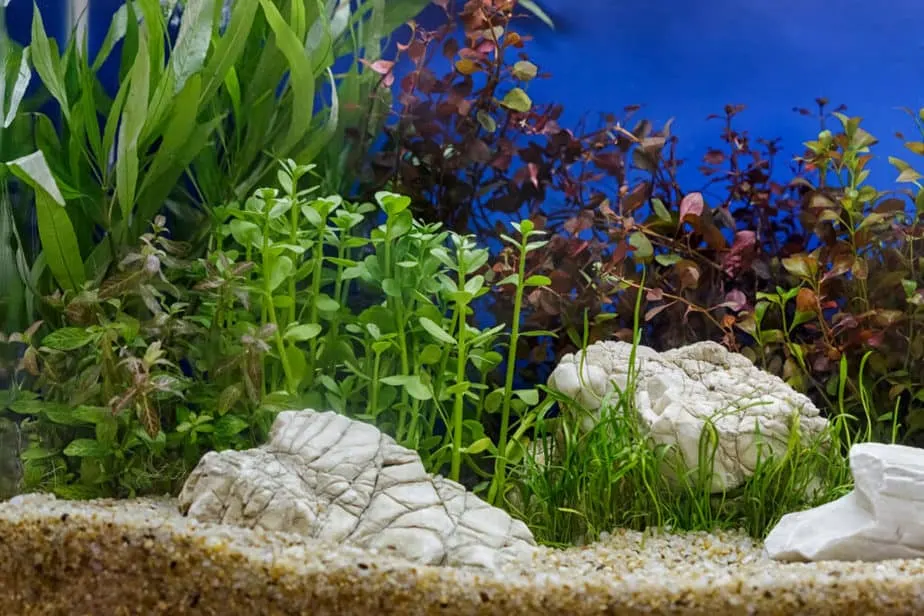
A lack of Ammonia Breaks the Cycle
If there’s not enough ammonia in a new aquarium for the growing colony of bacteria to feed on, they will die. If your colony of bacteria dies, than your tank will not be cycled because we need those bacteria. Why would there not be enough ammonia?
The most obvious reason is because you did not add enough and the growing colony of bacteria already ate everything you add. If you use liquid ammonia you’ve got a little bit more control over the amount of diluted ammonia in your tank, compared to the estimated guess work that is rotting fish food.
This reason can happen in any tank, but there’s another planted tank specific reason: plants eat ammonia. If you’re trying to get a cycle going in a planted aquarium, you’ve got to keep in mind that all your plants that are already in the tank use the dissolved ammonia as food.
Therefore, it’s even more important to keep the amount of dissolved ammonia in check when cycling a planted tank. Make sure to buy one of these ammonia test kits, they are so worth every penny you spend on them. After the tank has cycled, you can still use it because you want to periodically measure ammonia to keep your fish safe.
What Does a “Cycled” Planted Tank Mean?
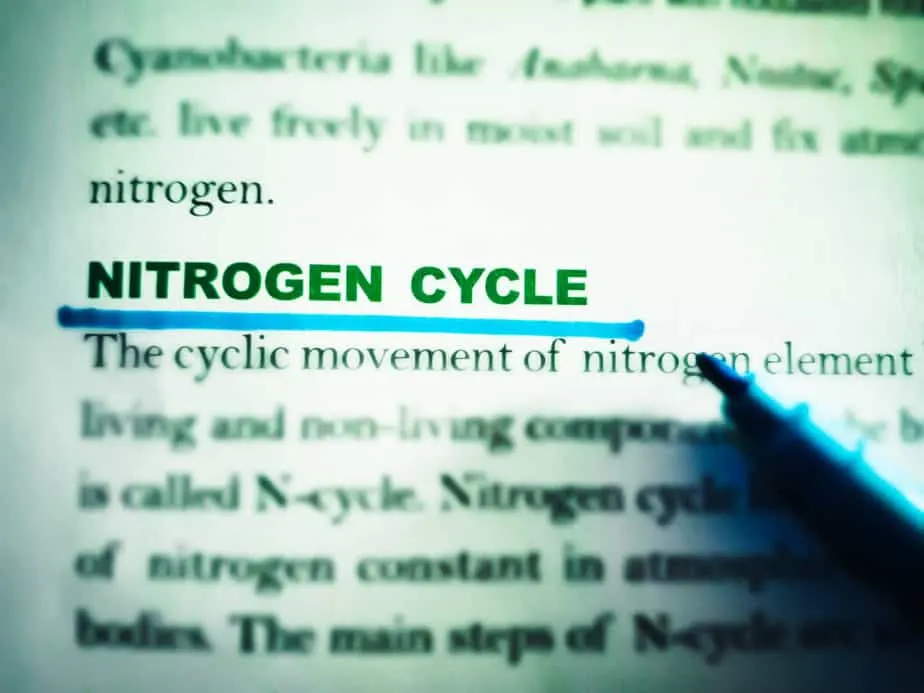
Although I’ve already written a comprehensive explanation that covers everything a beginner needs to know about the nitrogen cycle, I’ll provide a small recap of the basics. I still recommend that you check out this article on my site for further information.
A brand new aquarium is not fish-safe. Why? Because fish produce ammonia through their gills and their pee/poop, and that’s toxic to fish in low concentrations. To make sure an aquarium is safe to fish, there needs to be something that removes the dissolved ammonia from the aquarium water. Nitrifying bacteria, often referred to as beneficial bacteria, is just what we need.
These beneficial bacteria are housed primarily in the filter of our tanks. To grow a colony of beneficial bacteria is called “cycling” an aquarium. But why is it called a cycle?
That’s because ammonia is only the first product. Ammonia is produced by fish and rotting organic material. The first round of bacteria can convert this ammonia to nitrite that’s already less toxic. It’s still toxic, so you want as close to no nitrite in your water. Luckily there is a second set of bacteria that can convert nitrite to nitrate. Nitrate is not toxic to fish in reasonable concentrations. To prevent nitrate from building up to toxic heights, we as fish keepers perform water changes. This removes nitrate.
In a planted tank there’s something else that removes nitrates: the plants. That’s very convenient for us because the plants help us remove nitrates and can therefore replace part of the regular water changes.
How to Speed Up The Nitrogen Cycle
Speeding up the nitrogen cycle is by far one of the most popular nitrogen cycle related questions. Growing a steady colony of beneficial bacteria usually takes about 6 weeks. Fishkeepers, including myself, are impatient and want to add fish as soon as possible. There’s only one true way to reliably speed up the cycling process: adding already cycled filter media.
Cycled media means that there’s already plenty of beneficial bacteria growing in it. You can not buy cycled media in stores (that I know off) but you can take it out of another one of your own filters. From a friend’s filter is also an option obviously.
Another way to speed up the cycle is by adding commercially available nitrifying bacteria. A great example is this product on Amazon called API Quick Start. It contains bacteria, but it’s no instant way to grow an entire colony in your filter. You can test whether your aquarium is cycled by adding some ammonia, measuring the concentrations, waiting a few days and measure again. If the concentration of ammonia has decreased, and the amount of nitrite has increased, your tank is able to break down ammonia.
I would personally recommend being patient. You do not want to add fish and slowly watch them die due to ammonia poisoning, which brings us to our final section.
What Happens If You Don’t Cycle Your Aquarium?
The unfortunate reality is that if you don’t perform this task at all, you risk the health of your fish and all aquarium inhabitants.
First and foremost, although it might sound off seeing as we have been talking about adding ammonia into a fish tank, if you don’t cycle the aquarium, eventually ammonia will build up. Ammonia is toxic to fish and can quickly kill them. Even the most hardy fish can’t survive in high ammonia levels or uncycled tank water.
Next, if an aquarium is not cycled, another issue that may arise is an algae bloom. High levels of ammonia and nitrite are perfect food sources for algae. This can turn your water green and murky. Algae blooms can also be very detrimental to the health of your tank inhabitants.
Something that many don’t consider is that failing to cycle an aquarium may also result in inconsistent water quality, particularly as far as pH level consistency is concerned. This is yet another threat to the health of your fish.
Should You Do A Water Change After Cycling an Aquarium?
If you have successfully cycled your aquarium, it is recommended that you do a water change of 20% to 50% of the entire water volume. In fact, this is an important part of the aquarium setup process and it is required to set up a healthy natural ecosystem.
Can I Put Plants in an Uncycled Aquarium?
Interesting to note is that is that it is possible to put live plants in an uncycled tank. The reason for this is because plants aren’t affected by ammonia and nitrites the same was as fish are.
Moreover, if there are no fish yet present in the tank, then there should theoretically also be no ammonia buildups or nitrate levels. This way, you can do some fishless cycles, but already have the plants and substrate present in the tank. Live aquarium plants will do fine either way.
